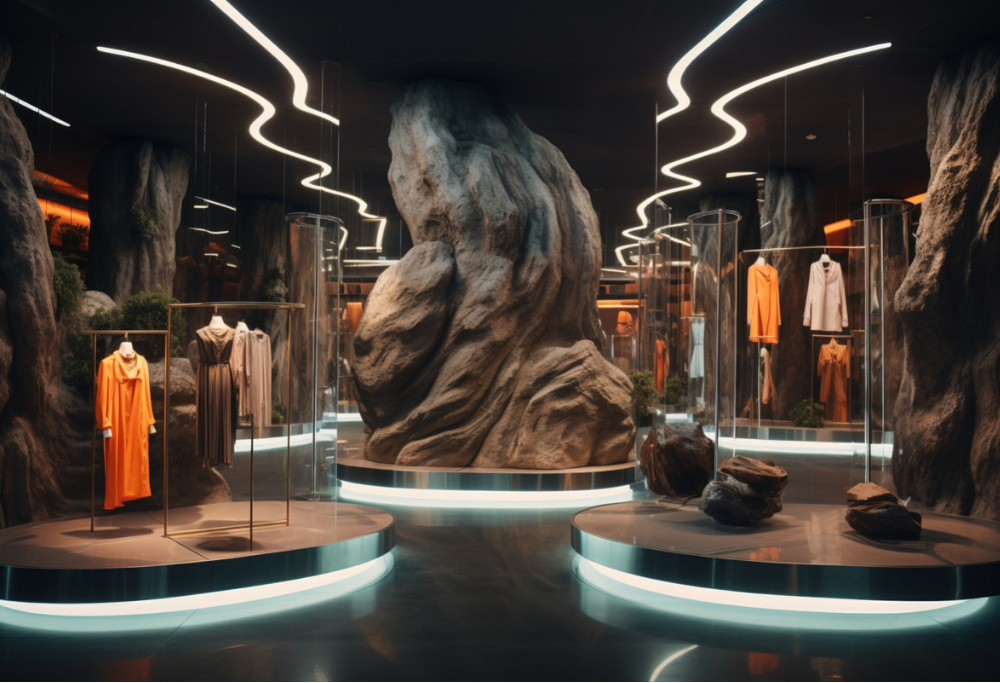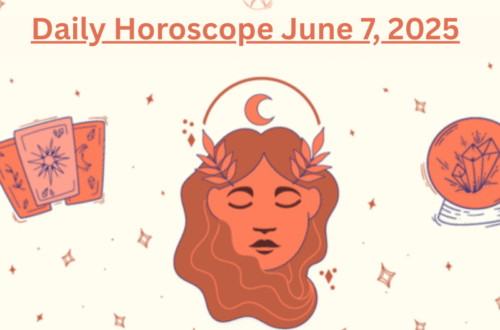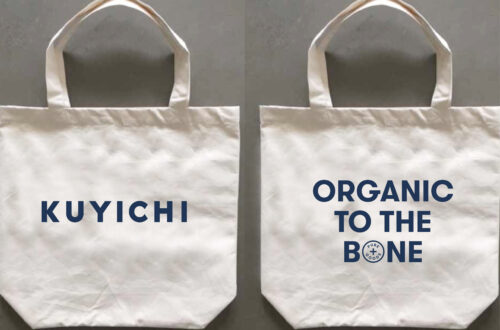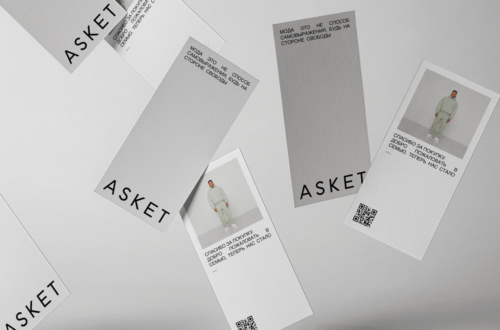Fashion has long led the way in innovation, from the invention of sewing machines to extremely efficient supply chains and early ventures into online retail.
However, technology’s influence in the fashion business is stronger than ever. Artificial intelligence is transforming large-scale production, augmented reality is improving the shopping experience, and virtual platforms are creating new business opportunities.
What exactly is the definition of fashion technology?
Fashion technology comprises a wide range of creative technologies that assist the fashion industry in designing, manufacturing, and selling products.
The fashion tech sector has developed these new solutions to benefit the industry and its customers by increasing efficiency and effectiveness in development, planning, production, distribution, retail, returns, and disposal.
Fashion technology innovation is the key to future success in the fashion industry.
Several well-known fashion retailers have closed due to a lack of creativity, and more are expected to follow suit. To thrive, organizations must prioritise digital integration, sustainability, and consumer interaction, which are currently the industry’s top prospects. Technology is critical to addressing these difficulties.
Artificial intelligence (AI) facilitates online fashion shopping, whilst augmented reality (AR) improves the in-store experience by providing unique and interactive shopping options. Furthermore, fashion technology helps to reduce the industry’s environmental effect by encouraging the use of sustainable materials, streamlining production processes to decrease waste, and minimizing emissions from returns.
For many customers, these developments are critical. Brand values affect half of all consumer purchasing decisions, and personalization remains a significant driver of consumer behavior.
Are consumers interested in fashion technology?
Did you know that 1822 Denim utilizes 3DLOOK’s YourFit to uphold its brand values of inclusivity, sustainability, and technology? This solution scans each customer and compares their individual measurements with product data to determine their ideal size. Customers of 1822 Denim are delighted with the outcomes — since adopting YourFit, there has been a 23% increase in active order value!
In the future fashion scene, technology will play an important part in corporate success. Currently, increased demand for technology in fashion retail has a substantial impact on brand revenue and customer satisfaction. According to Accenture, 75% of consumers prefer companies that propose products based on previous purchases.
Apparel sector technological trends and 10 fashion technologies for brands to investigate
1. Artificial Intelligence
Artificial intelligence (AI) has received a lot of interest from fashion brands. AI, which emulates human problem-solving and decision-making in robots, is transforming fashion.
Chatbots and tailored recommendations are two examples of common applications. Excitingly, Amazon intends to open an AI fashion store where machine learning algorithms would make personalized recommendations to in-store clients.
AI stylists are also appearing in retail, using data on size, style preferences, and demographics to deliver personalised styling suggestions. For example, Stitch Fix launched a personalized styling platform that recommends goods based on user preferences.
Furthermore, artificial intelligence helps to promote sustainable fashion methods. Mive, a slow fashion marketplace, employs 3DLOOK’s body scanning technology to collect client data remotely. This data enables a custom model that reduces waste and pollution.
2. Synthetic Media
As AI advances, expect a surge of new fashion ideas. One such future tech brand is looking into synthetic media, which is content created by algorithms that learn from audio, video, images, and text to produce lifelike media. This allows brands to quickly develop content.
For example, LG Group’s AI fashion design created 3,000 distinct patterns for its New York Fashion Week collection. In time, computer-generated media could showcase well-known people modeling a variety of items, accurately replicating their appearance, voice, and behavior.
3. Virtual Influencers
Companies are aggressively using synthetic media through virtual influencers, which are computer-generated characters that mimic human influencers on social media sites.
Celebrities like Lil Miquela have big followings, which attracts top brands ready to dress them in digital fashion to sell their wares.
Furthermore, businesses are not just cooperating with known personas; they are also creating their own. PrettyLittleThing, like Yoox and Prada, recently developed a virtual influencer, ‘Virtual Girl,’ to market products across its platforms.
4. Live Streaming
Companies are aggressively using synthetic media through virtual influencers, which are computer-generated characters that mimic human influencers on social media sites.
Celebrities like Lil Miquela have big followings, which attracts top brands ready to dress them in digital fashion to sell their wares.
Furthermore, businesses are not just cooperating with known personas; they are also creating their own. PrettyLittleThing, like Yoox and Prada, recently developed a virtual influencer, ‘Virtual Girl,’ to market products across its platforms.
5. Virtual Fashion
Digitally savvy consumers are embracing virtual fashion, often known as digital fashion—virtual clothing that they may accumulate and ‘wear’ online. Ralph Lauren, for example, has launched a virtual store on Roblox, allowing gamers to purchase digital fashion inspired by its real-world designs for their avatars.
Meanwhile, premium companies such as Dolce & Gabbana and Louis Vuitton are capitalizing on the digital fashion NFT trend, which involves blockchain-based, tradable digital assets. According to Morgan Stanley, the luxury fashion NFT market is expected to reach $25 billion by 2030.
6. 3D Printing
3D printing allows merchants to boost customisation while also meeting modern consumers’ environmental demands. This method enables the exact printing of complex digital designs, reducing manufacturing errors and resource waste.
Currently, 3D printing in fashion is largely used to create display items. Designer Asher Levine, for example, has created one-of-a-kind things for music icons like as Grimes, Lady Gaga, and Lil Nas X. However, forward-thinking manufacturers are working to make 3D-printed apparel more accessible. For example, 3D-TEX, a firm founded last year, intends to make 80,000 seam-free clothing each year using 3D knitting technology.
7. Metaverse
Fashion businesses are overcoming tightening data privacy requirements by exploring new client engagement channels such as the metaverse. This virtual landscape, which includes platforms like Decentraland and Meta’s Horizon Worlds, offers users opportunities for social engagement, gaming, and retail. Despite long-term viability concerns, prominent fashion businesses are heavily spending in digital advertising to reach younger populations.
Furthermore, fast fashion behemoths like H&M are expanding into digital realms like Roblox, creating experiences like the ‘Looptopia Experience,’ which allows players to create virtual ensembles. Luxury brands such as Gucci and Burberry are also capitalizing on this potential, building a presence on platforms such as Roblox to connect with customers in new ways.
8. Blockchain
Fashion firms are discovering numerous possibilities for blockchain technology, which is a decentralized ledger system.
In an annual counterfeit fashion business worth $300 billion, firms such as Chanel are using blockchain to prevent counterfeiting. They’re launching digital passports, which use distinctive metal plates embedded in objects to authenticate authenticity.
Furthermore, blockchain is being used to increase transparency in response to consumer demand for environmentally friendly and ethical products. Retailers like as Net-a-Porter are using “digital twins” for their products, which contain precise impact data that can be updated in real time.
9. Internet of Things
The Internet of Things (IoT) is a concept in which products are integrated with sensors and software, allowing them to connect to the internet and share data. While “smart” gadgets such as lightbulbs and watches are famous examples, the fashion industry is also experimenting with IoT.
Fashion brands use this technology to improve stock management and reduce product loss during shipping, such as by integrating trackers inside containers. Furthermore, companies such as Amazon and H&M are experimenting with IoT applications in stores, introducing features such as “magic mirrors” that allow shoppers to browse and try on virtual outfits via touchscreen screens.
10. Innovative eco-materials
As the fashion industry grapples with the alarming rate of garment waste, there is a growing interest in closed-loop recycling solutions that decrease waste and promote sustainable practices. Novetex Textiles, for example, has created a mechanical cotton recycling system capable of processing up to three tonnes of fabric per day with no water or chemical waste.
Technological improvements, including as eco-friendly dyeing procedures and lab-created sustainable materials, provide new opportunities for improving fashion sustainability. Gucci is looking into eco-friendly alternatives to leather, while Hermès and Lululemon are using mycelium, a fungus-based material.
Packaging, which accounts for a large portion of fashion’s plastic waste, is also being innovated. Oceanium is a startup that uses biorefinery technology to manufacture bio-packaging from materials such as seaweed. Furthermore, firms like Grundéns are adopting compostable packaging produced from corn-derived components, following in the footsteps of sustainability-focused brands like LANIUS and Maggie Marilyn, which provide compostable packaging to consumers in order to replenish the soil.






